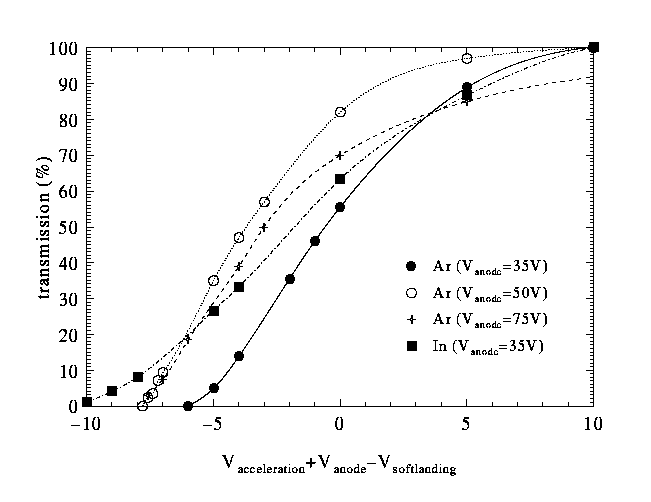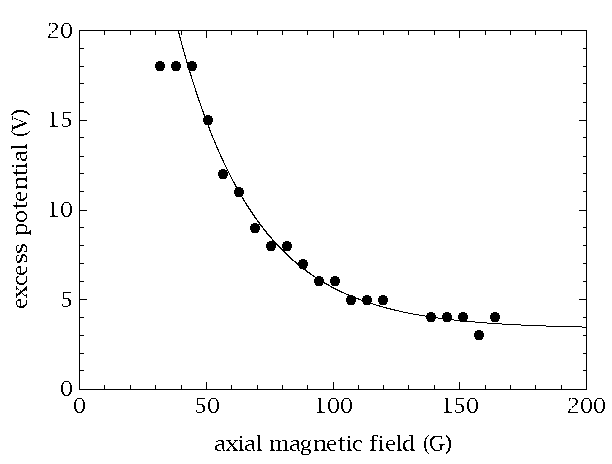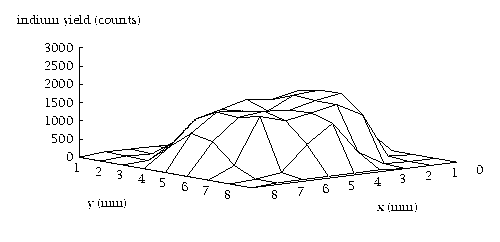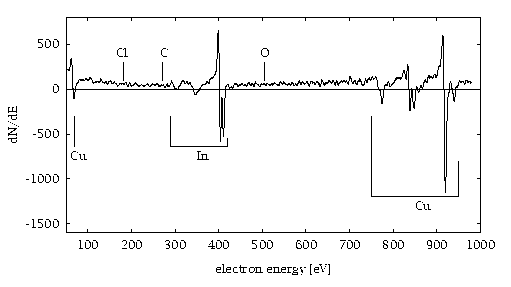Pilot experiments on In atoms softlanded on Cu(100)
Deposition energy
We performed a number of experiments to determine the properties of
the soft-landing ion beam and to characterise the produced samples.
 In above figure we plotted the ion current as function of
the potential difference between the ion source and the target,
for different atomic species and ion discharge currents.
The ion current has been normalised to the unretarded ion beam.
The data are used to estimate the deposition energy of the softlanded ions,
assuming that zero transmission corresponds to a deposition energy of
0 eV.
According to these data, the plasma potential in the ion source is
approximately 5 - 10 eV
higher than the discharge potential over the plasma.
In above figure we plotted the ion current as function of
the potential difference between the ion source and the target,
for different atomic species and ion discharge currents.
The ion current has been normalised to the unretarded ion beam.
The data are used to estimate the deposition energy of the softlanded ions,
assuming that zero transmission corresponds to a deposition energy of
0 eV.
According to these data, the plasma potential in the ion source is
approximately 5 - 10 eV
higher than the discharge potential over the plasma.
It turned out that the exact value of this excess potential is very sensitive to the ion source conditions. For exemple, a decrease of the axial magnetic field applied over the ion plasma from 150 to 50 G, results in an increase of the excess potentiel from 3 to 18 V (see next figure).


It turned out that the exact value of this excess potential is very sensitive to the ion source conditions. For exemple, a decrease of the axial magnetic field applied over the ion plasma from 150 to 50 G, results in an increase of the excess potentiel from 3 to 18 V (see next figure).

Deposition homogeniety

- the layer thickness agrees within 20% with the number of deposited In ions
- the layer thickness varies less than 20% over the beam spot
- the size of the beam spot is about 0.5 cm2

» back to old facilities